Seven Questions Over Breakfast with Bob Staake
 December 27th, 2011 by jules
December 27th, 2011 by jules
 This morning, for my last breakfast interview of 2011, I welcome one of the hardest-working illustrators (and authors and designers) in children’s literature, whom the Washington Post described as “one of the most dynamic, original, colorful and humorous cartoonists working today.” Just this year, Bob Staake—who is also an editorial illustrator, as well as a cover illustrator for the New Yorker—illustrated two titles, if I’m counting correctly, and a visit to this page of his site shows he has nearly ten titles soon to be released. As he notes below, he is author and/or illustrator of over 50 children’s books to-date in his career.
This morning, for my last breakfast interview of 2011, I welcome one of the hardest-working illustrators (and authors and designers) in children’s literature, whom the Washington Post described as “one of the most dynamic, original, colorful and humorous cartoonists working today.” Just this year, Bob Staake—who is also an editorial illustrator, as well as a cover illustrator for the New Yorker—illustrated two titles, if I’m counting correctly, and a visit to this page of his site shows he has nearly ten titles soon to be released. As he notes below, he is author and/or illustrator of over 50 children’s books to-date in his career.
If Staake didn’t consistently produce such exciting illustrations (of great “compositional flair and imagination,” in the words of Booklist), to me he’d merely be That Blessed Guy Who Took On the Contemporary Adaptation of Struwwelpeter. (Yes, he has a special place in my heart for his gutsy 2006 re-imagining of Heinrich Hoffmann’s 19th-century cautionary tale for children.) But he does much more, bringing readers colorful and engaging books (particularly  engaging in the case of this year’s Look! A Book! from Little, Brown) on a regular basis, his bold, graphic, and highly stylized digital artwork providing a feast for young eyes. (Drawn went so far as to write in this 2006 interview, “To say that Bob Staake is just an illustrator is like saying The Beatles were just a bunch of musicians; the title doesn’t do the artist justice.”) Best of all, as he writes at his site, his books range from “the goofy and silly to the thought-provoking and mysterious.” With both words and pictures, he adds, he aims to entertain but also ask young readers to “wonder, question and think.”
engaging in the case of this year’s Look! A Book! from Little, Brown) on a regular basis, his bold, graphic, and highly stylized digital artwork providing a feast for young eyes. (Drawn went so far as to write in this 2006 interview, “To say that Bob Staake is just an illustrator is like saying The Beatles were just a bunch of musicians; the title doesn’t do the artist justice.”) Best of all, as he writes at his site, his books range from “the goofy and silly to the thought-provoking and mysterious.” With both words and pictures, he adds, he aims to entertain but also ask young readers to “wonder, question and think.”
And, as you can see in some of the art Bob shares below, his work can be refreshingly honest and wickedly funny. (His Facebook status updates still remain one of the top-five reasons I don’t just drop my account already. A recent example of Bob engaging with his readers: “Santa’s List Of Rejected Reindeer Names:” … And let me just say Bob has funny friends, and I’m talkin’ to you, Michael Herron, who responded with “Sphincter.” Jimmy Mutch’s “Thud” comes in a close second for me.)
Well, let’s turn it over to Bob now, shall we? He says he’s not a huge breakfast guy, unless I include a pot of French Roast before noon. Ah. A coffee-lover after my own heart. I’ll get the basics from him, while the coffee brews.
I thank him for visiting.
Jules: Are you an illustrator or author/illustrator?
Bob: Author/Illustrator.
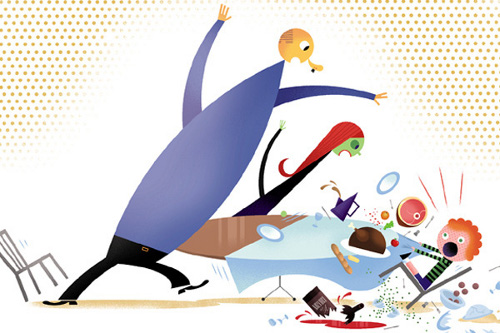
Jules: Can you list your books-to-date?
Bob: Author and/or illustrator of over 50 books to-date, including:
- Hello, Robots (Viking – 2005)
- The Red Lemon (Random House / Golden Books – 2007)
- The Orb Of Chatham (Commonwealth Editions – 2005)
- The Donut Chef (Random House / Golden Books – 2008)
- Mary Had A Little Lamp (Bloomsbury – 2008)
- This Is NOT A Pumpkin (Simon and Schuster – 2005)
- Pets Go Pop! (Little, Brown – 2009)
- The First Pup (Macmillan – 2009)
- I’m A Truck (Random House / Little Golden Books – 2006)
- Look! A Book! (Little, Brown – 2011)
- Struwwelpeter (Fantagraphics – 2006)
- We Planted A Tree (Random House / Golden Books – 2010)
- Cars Galore (Candlewick Press – 2011)
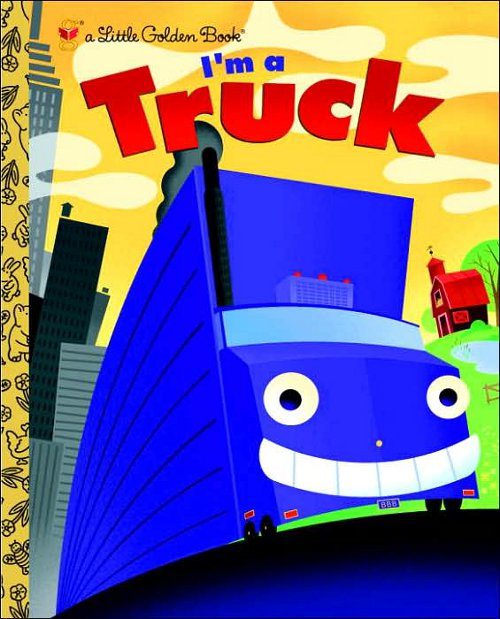
Jules: What is your usual medium, or––if you use a variety—your preferred one?
Bob: I try to mix things up at the drawing board. While all my art is ultimately digitized, I create it in a variety of ways — pen and ink, Photoshop tools, scanned pieces of paper, photographic elements, collage, etc. I do a lot of books and for a lot of different publishers, so I’m always trying to make each title distinctive and different from the last. I get bored very easily, so by always trying something different, I’d like to think it keeps my work fresh, unexpected, and surprising to readers.
Can you find the squawking crow?”
(Click to enlarge)
Look and find the vampire’s cape!”
(Click to enlarge)
Can you find the mini one?”
(Click to enlarge)
(Little, Brown, February 2011)
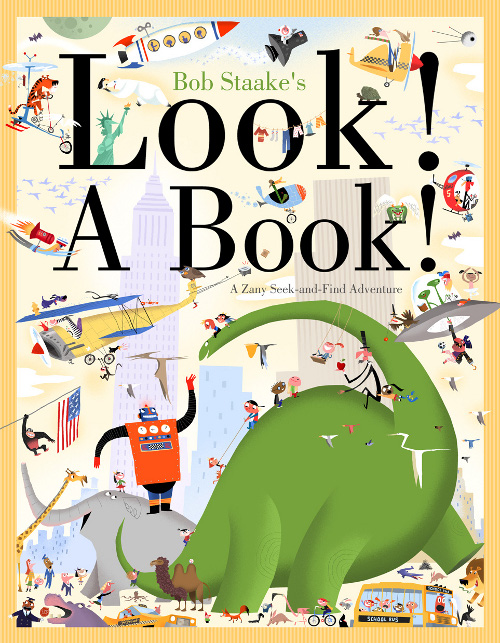
Jules: If you have illustrated for various age ranges (such as, both picture books and early reader books OR, say, picture books and chapter books), can you briefly discuss the differences, if any, in illustrating for one age group to another?
Bob: I’m always conscious of who I am writing and drawing for — and my target demographics. I’m one of those illustrators who does everything from New Yorker covers to Hallmark greeting cards, illustrations for the Washington Post and MAD, animation design for Cartoon Network and Little Golden Books — and when you create for such diverse audiences like that, you definitely have to be cognizant and sensitive to their expectations.

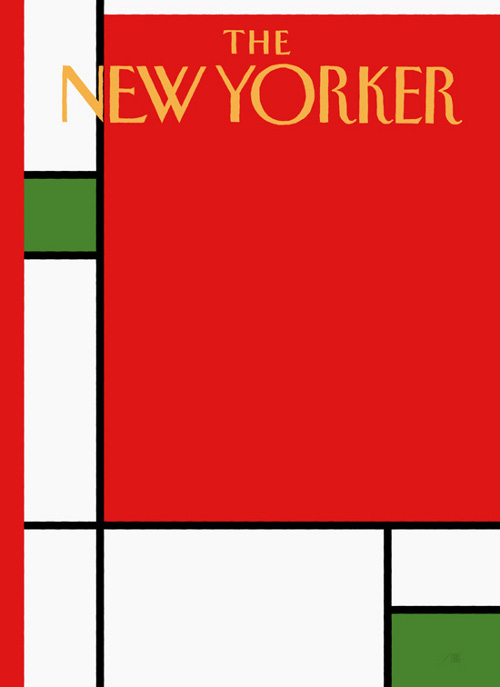
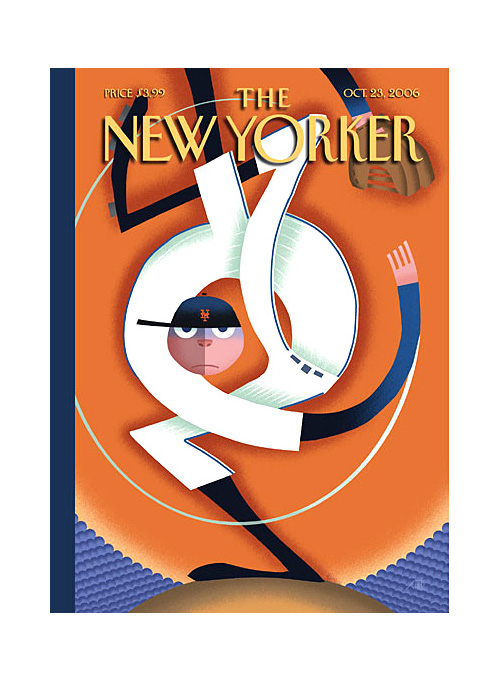
Happily, I’m an adult today and have been a six-year-old in the past, so I only draw from my experiences when I put my pen to paper. “What sort of imagery would have excited me as a kid?” When I’m in that mode, I put on my little Bobby-Staake-growing-up-in-Redondo-Beach-California hat and create visuals that I would have become lost in.
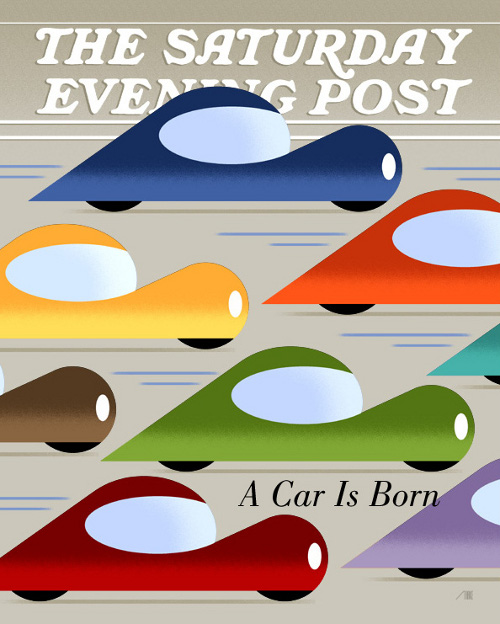
“How do I represent this very complex, multi-faceted [thing], even on the cover of The New Yorker, in the most succinct, poetic and clever way possible?” It’s then that I put on my Bob-Staake-visual-metaphor thinking cap and use my adult talents to craft a graphic that’s not only graphically pleasing, but says something, hopefully deeper, about who we are.
But I have to say: I think I derive the most joy from locking myself in my studio, cranking the music, and just using color, shapes, forms, and characters that I know will make a seven-year-old giggle. I always trust my instincts, too. If it’s something that makes me smile, I know it will have the same affect on a child.
down here and up there — but there was no puppy — anywhere!”
— From The First Pup: The Real Story of How Bo Got to the White House
(Feiwel & Friends, May 2010)
(Click to enlarge)
Jules: Where are your stompin’ grounds?
Bob: The joke is that I live in a 200-year-old house on the elbow of Cape Cod that’s 300 feet from the ocean — but is only inhabited by 100 ghosts. I designed a new three-story studio, which was built here in 2007, and that’s where I probably spend eighteen hours each day.
(Click to enlarge)
Jules: Can you briefly tell me about your road to publication?
Bob: I started working pretty young as a professional illustrator — at the age of 17. I remember my first paid assignment in 1976 — and a complete fluke. I did four color illustrations for a National Football League game program. I was paid $400 for the illustrations and was stunned that anybody would pay me to do what I loved.
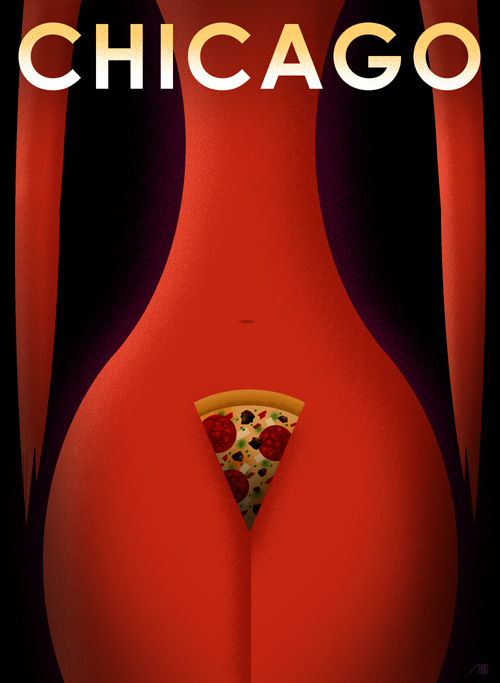
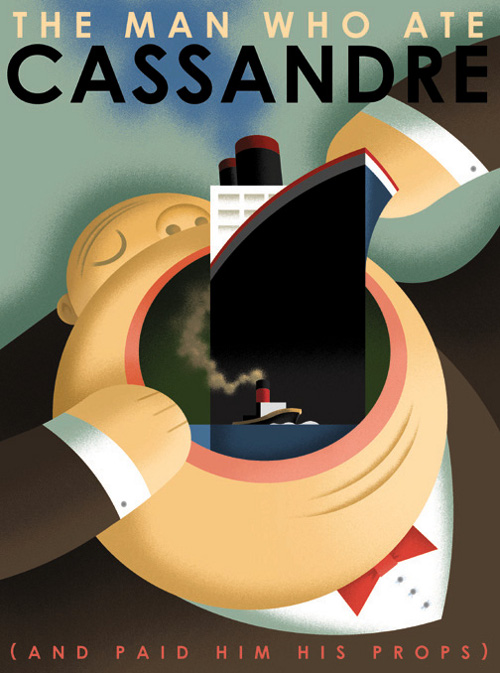
Jules: Can you please point readers to your web site and/or blog?
Bob: http://www.BobStaake.com. People also watch me on Twitter (www.twitter.com/bobstaake), and I have a pretty active following on Facebook (www.facebook.com/bobstaake), where I love to connect with my fans.
(Click to enlarge)
Jules: If you do school visits, tell me what they’re like.
Bob: I do a fair amount of lectures and talks about my work, but usually to professionals, organizations, and conferences. When I have the chance to read to a bunch of kids, I always take advantage of the captive audience and read the manuscript for one of my yet-to-be-published books. I read a silly book, called Name That Baby!, and these kids just went crazy over it — so on that feedback alone, I went back to my studio and did all the illustrations. I normally don’t work that way, though I finished The Red Lemon entirely (without a publisher commitment, advance, or any editorial feedback) before taking it to Random House. Happily, they loved the book and agreed to publish it.
Jules: If you teach illustration, by chance, tell me how that influences your work as an illustrator.
Bob: My influences have never been the expected ones. Most illustrators will cite other visual artists and illustrators as having had an influence on their work, but for me I think I have learned as much from Diane Arbus and Philipe Starck as I have from Edward Hopper and Paul Rand. I think I was always a pretty confident draftsman from a very young age, so I felt that I had drawing “down,” and I guess that is why I looked to other non-traditional sources of inspiration for my illustration work.

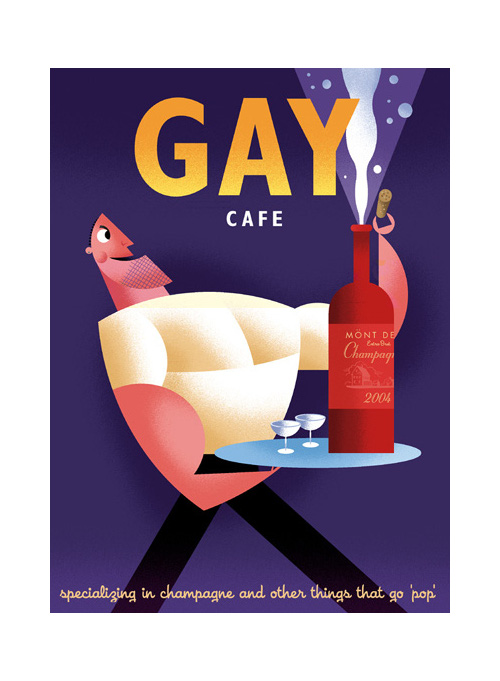
Jules: Any new titles/projects you might be working on now that you can tell me about?
Bob: It seems like I am always working on fifteen things at the same time, and when you do this volume of work, you need to find ways to work fast, efficiently, and with confidence. I publish three to four children’s books a year, but I’m always planning a couple years in advance. I just finished illustrating Bugs Galore for Candlewick Press and then had to immediately start illustrating Please Don’t Squish The Sasquatch! for Hyperion/Disney. I finished that, and then I had maybe two months to complete Look! Another Book! for Little, Brown (which I literally finished on Christmas Eve). Now I dive into my first completely wordless picture book, Bluebird, for Anne Schwartz and Lee Wade at Random House, which is due in a little more than 45 days, and then I go on to Toys Galore for Candlewick.

In the middle of all this, I have to squeeze in freelance assignments for everyone from the New Yorker to MAD, the Wall Street Journal to the Washington Post (not to mention finishing off the loft in the studio — if only so I have a place to store all my author copies!). I’m also in the process of developing two e-books exclusively for the iPhone and iPad (Runaway Pizza and Name That Baby!), which is really exciting because I get to call on, not only my skills as a writer and illustrator, but also as an actor, animation designer, and director. If you produce an e-picture book correctly, it’ll be perceived less like a traditional book and more akin to a video game — at least that’s the way I think this new medium needs to be approached.
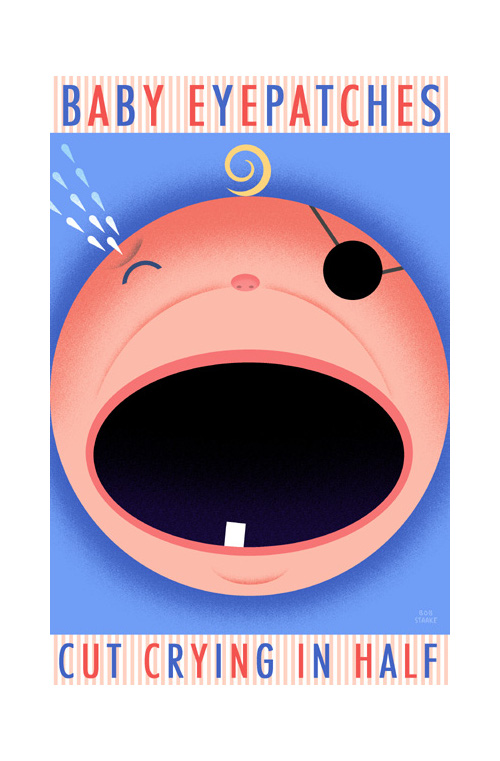
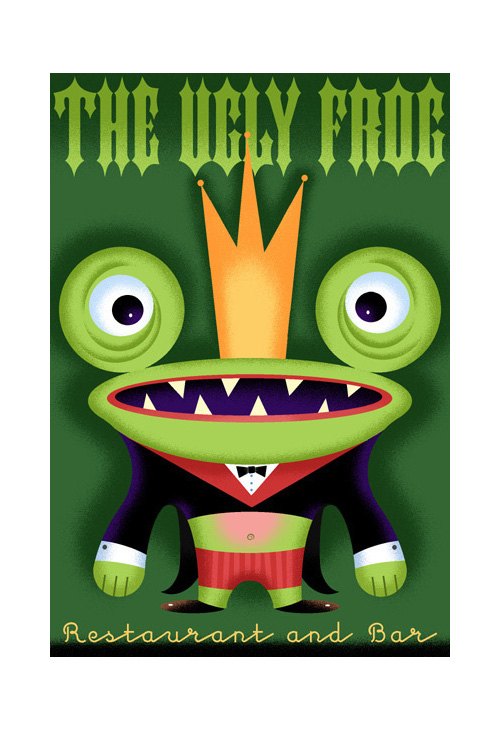
 Okay, the coffee’s ready, and we’re ready to get a bit more detailed with seven questions over breakfast. I thank Bob again for visiting 7-Imp.
Okay, the coffee’s ready, and we’re ready to get a bit more detailed with seven questions over breakfast. I thank Bob again for visiting 7-Imp.
1. Jules: What exactly is your process when you are illustrating a book? You can start wherever you’d like when answering: getting initial ideas, starting to illustrate, or even what it’s like under deadline, etc. Do you outline a great deal of the book before you illustrate or just let your muse lead you on and see where you end up?
Bob: Every book is different (or at least they should be), so there’s no finite answer. Sometimes I’ll illustrate a book in Photoshop, simply “drawing” with the lasso and a mouse. Other times I will mouse using the more precise elliptical tool; then I may decide to draw characters on white bond paper, cut out their silhouettes, place against black paper, scan, and then add details.
I just finished illustrating a very elaborate and detailed book that required me to create hundreds of flowers, plants, shrubs and weeds — all of which I did by drawing them with pen, brush, and india ink and then importing into my scenes where they were digitally colored. I also try going into each book doing something completely fresh that I have never tried before — allowing me accidents, missteps, and experiments to stumble across visual solutions that I wouldn’t normally stumble onto. It’s important that I keep myself entertained and excited throughout the entire book-creating experience.
2. Jules: Describe your studio or usual work space.
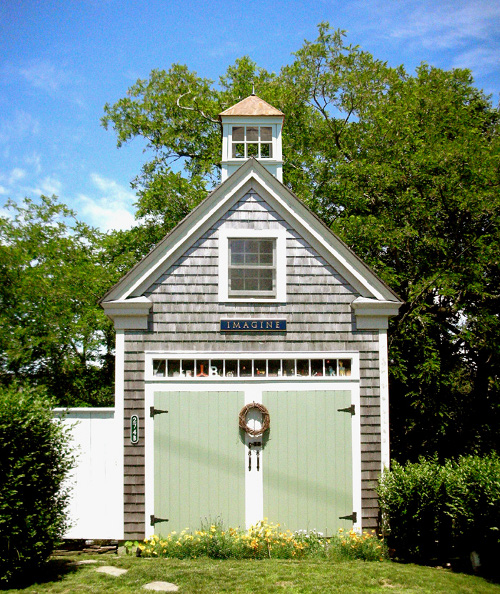
Bob: I’m fortunate to work in what many would consider the “dream studio.” I draw, write, and create on the first floor, work on fine art and wood projects in the basement, and then am able to relax in the loft. My home and studio are right on Main Street in Chatham, Massachusetts. People are always walking by on their way to the beach and are taken with this small little cupola-topped Cape Cod building with “Imagine” engraved on a quarterboard above the barn doors, and they stop to take pictures of it. Most of the locals know that it’s my studio, but tourists seem to just view it as a photo op.
(Click to enlarge)
3. Jules: As a book lover, it interests me: What books or authors and/or illustrators influenced you as an early reader?
Bob: I was able to sell Look! A Book! to Little, Brown, based on a conversation I had with my editor in which I explained my theory that “looking is a form of reading.” As a child, I did far more looking at books, magazines, newspapers, TV, and advertising than I did clinical reading — and I think this openness to graphics and curiosity about images was the most instrumental influence on my becoming a visual communicator. As a kid, I think I gleaned as much knowledge from simply looking at the photos in a National Geographic or Life magazine as I would have, had I read all the words.
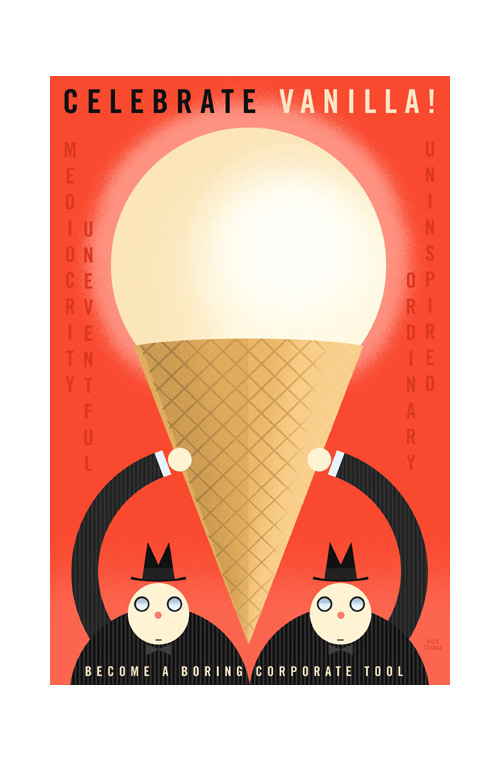
4. Jules: If you could have three authors or illustrators—whom you have not yet met—over for coffee or a glass of rich, red wine, whom would you choose? (If they’re deceased, I won’t tell.)
Bob: J. D. Salinger, Charles Eames, and Diane Arbus.
Well, people asked — you might have guessed — ‘Whose donuts are the very best?'”
— From The Donut Chef (Golden Books/Random House, 2008)
(Click to enlarge)


5. Jules: What is currently in rotation on your iPod or loaded in your CD player? Do you listen to music while you create books?
Bob: My musical tastes are very eclectic. Everything from Talking Heads to X, Steely Dan to the Staple Singers, Nick Lowe to George Gershwin, Raymond Scott to the Ramones. That said, I probably listen to more NPR in the studio.
Save it! Tow it! / Big repair job! / Take-a-bath-and- / rinse-with-care job!”
(Click to enlarge)
(Candlewick, March 2011)
6. Jules: What’s one thing that most people don’t know about you?
Bob: Three things: That I once got an art director fired from a project, was busted for sneaking into Richard Nixon’s San Clemente compound, and have been shot out of a circus cannon.
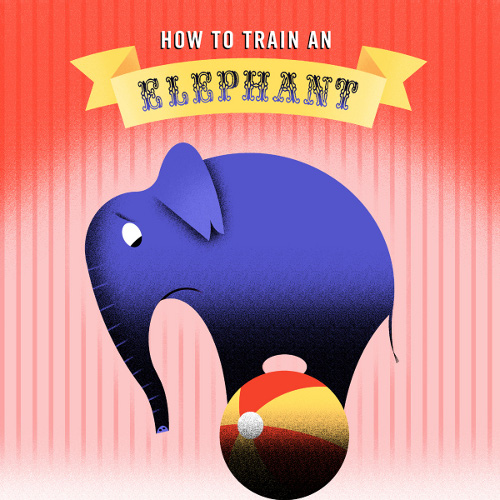
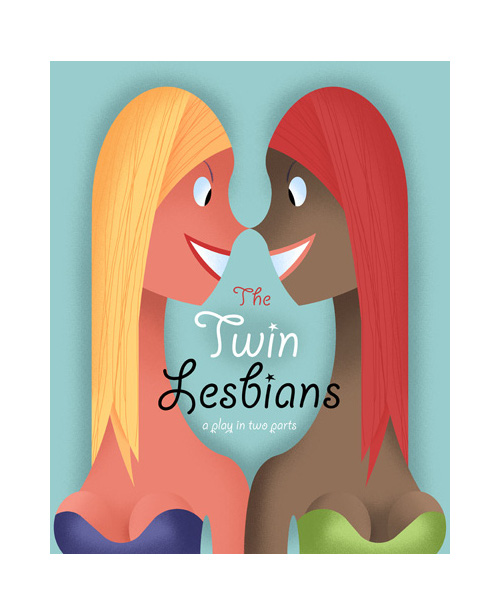
7. Jules: Is there something you wish interviewers would ask you — but never do? Feel free to ask and respond here.
Bob: If a fire spontaneously broke out in your studio, what are the three things you’d immediately try to save?
One of my four back-up hard drives, the Eames rocker, an original drawing I did in 1965 showing dolphins playing baseball.
{Also…}
The older you get, the more creative and unique your books seem to get. How do you manage to keep your work new and fresh?
If I have done it before, it doesn’t really interest me. Too predictable. On a creative level, I hope I have evolved into an artist who takes chances, tries new approaches, and isn’t risk-averse. I’m just very, very lucky to work with a select list of the top publishers in the world, who support my desire to try new things.
For example, in the latest book I just finished illustrating for Candlewick Press, I asked my very talented seven-year-old niece, Amelia, if she would want to do some drawings of bugs that I could work into each scene. She did these wildly creative, inventive, and unique bugs as line art, which I then scanned, colored, and integrated into the illustrations. The end effect is visually intoxicating, because you see her primitive, innocent, and playful bugs juxtaposed along with my very slick, stylized, and graphically-bold insects. I mean, I would have never even thought of doing that in a book — if I wasn’t first blown away by Amelia’s precocious skills as an artist and then taking the time to make it all integrate in a way that her drawings complement my design, rather than appear aesthetically jarring and out of context. When I first thought of using her kid-like art in the book, I never doubted that it would work — I just could have never imagined that it would work so well.
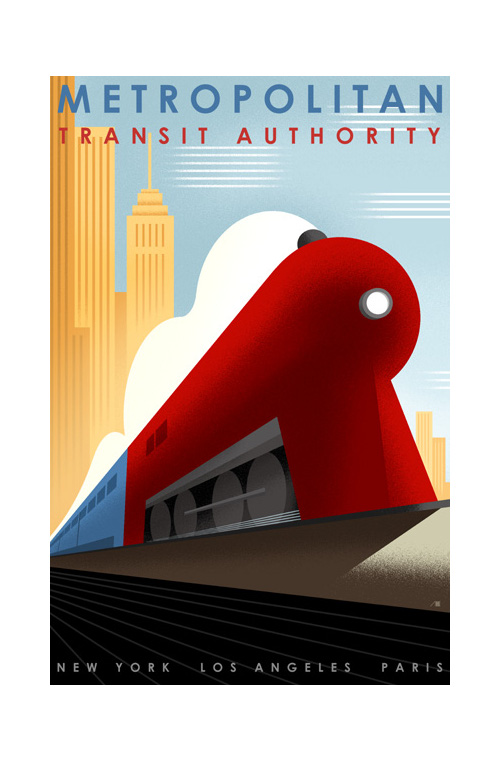

Jules: What is your favorite word?
Bob: “Finished!”
Jules: What is your least favorite word?
Bob: “Smarmy.”
Jules: What turns you on creatively, spiritually or emotionally?
Bob: I’m really fascinated and inspired by designers who are able to communicate with a less-is-more approach to their visual imagery, because I’m not very good at that myself. The simplicity of a design, communicating with an economy of line and form — that never fails to excite me.
Jules: What turns you off?
Bob: Horrible children’s book illustration — and, unfortunately, that can account for an upwards of 85% of the titles that are published annually.
Jules: What is your favorite curse word? (optional)
Bob: “Fuck.”
Jules: What sound or noise do you love?
Bob: The rippling of water against the side of a canoe.
Jules: What sound or noise do you hate?
Bob: My neighbor’s weed whacker.
Jules: What profession other than your own would you like to attempt?
Bob: Architect.
Jules: What profession would you not like to do?
Bob: Insurance adjuster.
Jules: If Heaven exists, what would you like to hear God say when you arrive at the Pearly Gates?
Bob: “Don’t think of this as ‘the end’, Mr. Staake. Think of it more as your ‘final deadline.'”
Note: A must-see in my book — Bob’s Build-Your-Own Bookmobile!
LOOK! A BOOK! A ZANY SEEK-AND-FIND ADVENTURE. Copyright © 2011 by Bob Staake. Published by Little, Brown. All images reproduced by permission of Staake.
CARS GALORE! Text copyright © 2011 by Peter Stein. Illustrations copyright © 2011 by Bob Staake. Reproduced by permission of the publisher, Candlewick Press, Somerville, MA.
THE DONUT CHEF. Copyright © 2008 Bob Staake. Published by Golden Books/Random House, New York. Images reproduced by permission of Staake.
All other artwork and images used with permission of Bob Staake. All rights reserved.
The spiffy and slightly sinister gentleman introducing the Pivot Questionnaire is Alfred, © 2009 Matt Phelan.

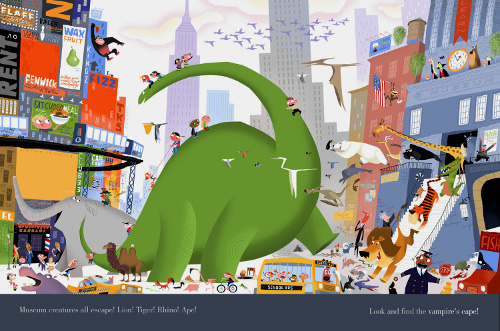

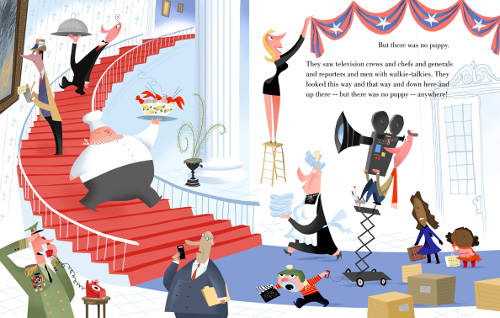
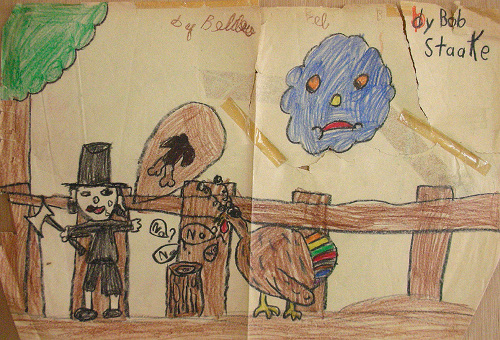
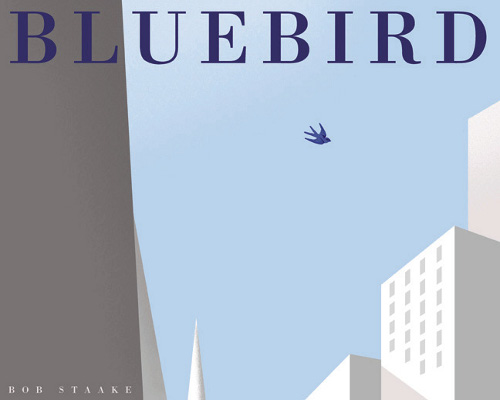

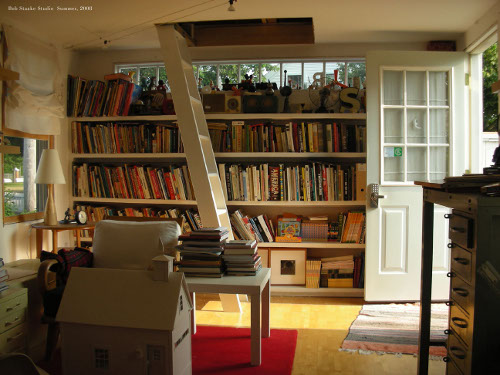
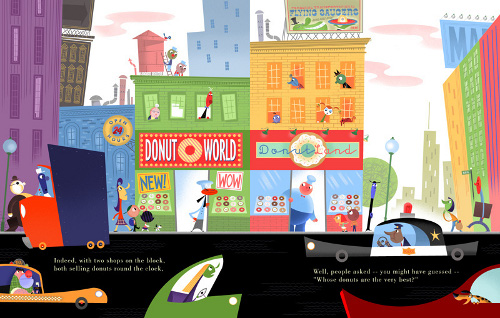




I love Cars Galore! I’ll definitely have to check out Staake’s other books now. Thanks for sharing this with us.
Not everyone’s illustrations remind me of stickers – but these do. They just … POP. The energy and vibrancy hints at a child-like mind – full of that restless, “Ooh, let’s do this!” kind of vibe. Some fun stuff.
What an interview to end the year! I just printed his Bookmobile on cardstock; will be folding and gluing in minutes. I love the layout and look of his website and it’s loaded with goodies. His books are one of a kind, unique and colorful. I will be adding a couple more to my shelves. Thanks to you both.
He won me over with The Donut Chef :), and it’s always exciting to see just what he’ll do next. Whenever I see his name or art, I think: POP! MANIC! GENIUS!
Thanks for this fab interview!!
Thank you for this interview! Great read!
great interview, but what i love is how bob takes a few moments everyday to add something wacky and wondrous to his facebook page … it really gets us fans thinking outside the norm (although sometimes the cliches pop up in weird ways) … thanks, bob …
Another eye-opener on the wider story behind a New Yorker cover creator. Most of his covers are just loads of fun, but the Lincoln Memorial one practically brought me to tears when published. Knew it had to be just the tip of a confident iceberg, and now comes confirmation.
What a great interview! I enjoyed so much of it but my favorite part was when Bob talked about looking being a form of reading. What an important thought and one I will be sharing with teachers and parents.
WHAT AN INSPIRING INTERVIEW!
bob’s work makes me want to throw my stylus and
Wacom tablet into the garbage (sorry Wacom) and pick up my mouse again! I love that he is not afraid to try something new on every project and how he stays inspired always. You rock Bob!
“Baby Eyepatches: Cut Crying in Half”
Wow, that made me laugh.
What a work ethic Staake has! Incredible, and such a great work.
Always a treat to see Bob’s work. I don’t know how he finds the time to do so much…and make all those funny Facebook posts.
we LOVE staake books at our house! our six year old reads the Red Lemon all the time! smiles!!
Yes i bought his book “Im a truck” as i loved the way it also reminded me of Tibor Gergely, an illustrator who did a number of 40’s, 50’s and 60’s golden books.
That retro type style is still relevant today- especially in this world of cynicism and loss of innocence.
[…] This image from Bob Staake, which Eisha and I agree needs to be a on tee […]
[…] over at Kirkus, I’ve got a brief Q&A with author/illustrator Bob Staake about his upcoming Spring picture book release from Schwartz & Wade Books, Bluebird, pictured […]
[…] a follow-up to my Kirkus Q&A last week with author/illustrator Bob Staake, today I’ve got a handful of images — some early and final pieces of art from both […]
[…] (without the text) from Sue Fliess’ Robots, Robots Everywhere!,illustrated by Bob Staake:“Robots spin and race and run. / Robots, robots—I want one!”(Click to enlarge […]
[…] This is also totally wild (there are unicorns in the Bible?), and I’d like to see Bob Shea or Bob Staake illustrate it, wouldn’t you? Also, I kinda want a […]
[…] cover character sketches from Bob Staake’s My Pet Book Title page illustration from Rilla Alexander’s The Best Book in the World […]